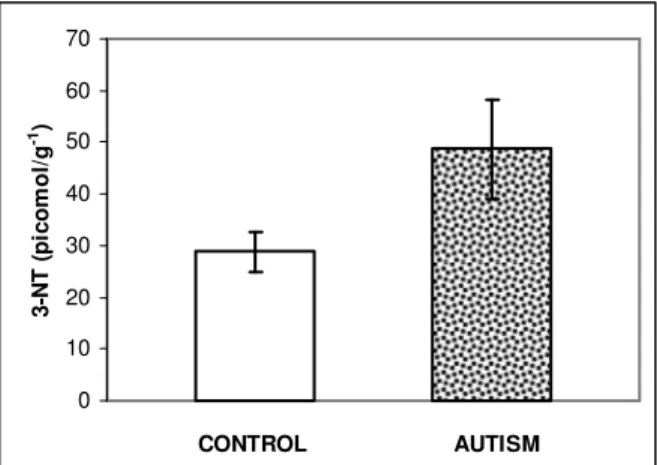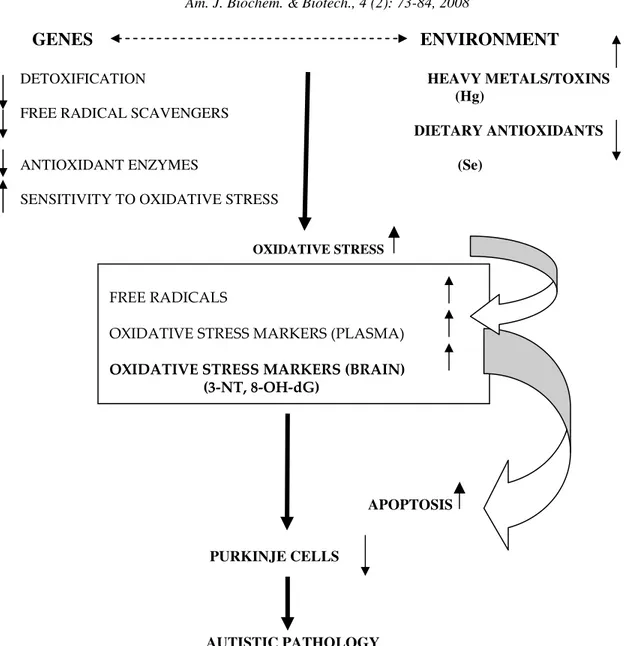Oxidative Stress in Autism: Elevated Cerebellar 3-nitrotyrosine Levels
Texto
Imagem



Documentos relacionados
In that case modelling of acoustic data would be done on the NASC of the pelagic assem- blage and then the trawls would be used both to derive the proportion of the fitted
A series of cinnamic acid/4-aminoquinoline conjugates conceived to link, through a proper retro-enantio dipeptide, a heterocyclic core known to prevent hemozoin formation, to
dependent negative alterations were observed in oxidative status and antioxidant capacity levels after the application of WO 3 in cultured rat primary hepatocytes..
In this context, the present study was aimed at investigating the changes in oxidative stress parameters (Lipid hydroperoxide, Carbonyl, 3-nitrotyrosine, 8-isoprostane,
Reinforcing the importance of CAT as an antioxidant tool to block the increase in skeletal muscle diabetic oxidative stress, we observed a positive correlation between TBARS levels
In the present study, the horses showed no oxidative stress, although the differences found between the groups in the lactate, glucose and GSH levels demonstrated that the mus- cle
The results observed in the OLG showed that the horses affected by oxidative stress, with strong immunostaining for nitrotyrosine in liver, kidney lungs, nervous tissue and
As introduced in the previous section, we understand that Latin American international Historians and IR scholars specially devoted to Global History have been making active